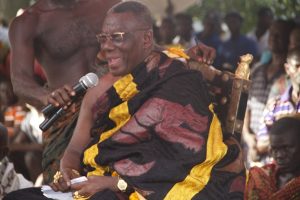Scientists at the United States space agency NASA found “black dust and debris” when they opened the space capsule that recently returned to Earth with the largest asteroid sample ever brought back from space.
NASA said on Tuesday that researchers discovered “dust and debris on the avionics deck of the Osiris-REx science canister when the initial lid was removed.
The space agency did not specify whether the materials discovered on opening the lid of the probe belonged to the asteroid, though NASA said on social media that “scientists gasped as the lid was lifted from the [Osiris-REx] asteroid sample return canister”.
The residue on the avionics deck found on Tuesday was likely a result of issues during the collection phase of the space mission, which NASA said were eventually solved, allowing for the secure transfer of the sample from the asteroid to the probe’s storage canister. NASA scientists are now waiting eagerly to begin analysing the bulk of the sample scooped from the asteroid, which will require “intricate disassembly” of the probe.
The robotic spacecraft OSIRIS-REx was launched in 2016 and collected its specimen three years ago from Bennu, a small, carbon-rich asteroid discovered in 1999, which is classified as a “near-Earth object” because it passes relatively close to the planet every six years.
The retrieval marked only the third asteroid sample, and by far the biggest, ever returned to Earth for analysis, following two similar missions by Japan’s space agency ending in 2010 and 2020.
Landing on the asteroid, Osiris-Rex collected roughly 250 grams of dust from its rocky surface. Analysis of the material taken from the asteroid, scientists believe, will help researchers better understand the formation of the solar system and how Earth became habitable.
NASA said the sample will also “help us better understand the types of asteroids that could threaten Earth”. Though the odds of Bennu hitting the Earth are considered remote, such a possibility has not been ruled out.
Roughly one-quarter of the Bennu sample will be immediately used in experiments and a small amount will be sent to mission partners in Japan and Canada, while the remainder will be conserved for study by future generations. The space probe ended its 6.21-billion-kilometre journey after parachuting down in the desert in the western state of Utah on Sunday, following a fiery descent through Earth’s atmosphere.










